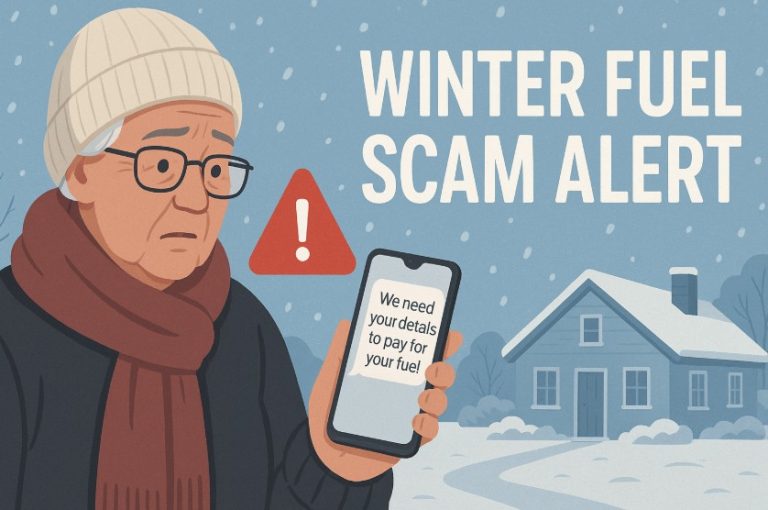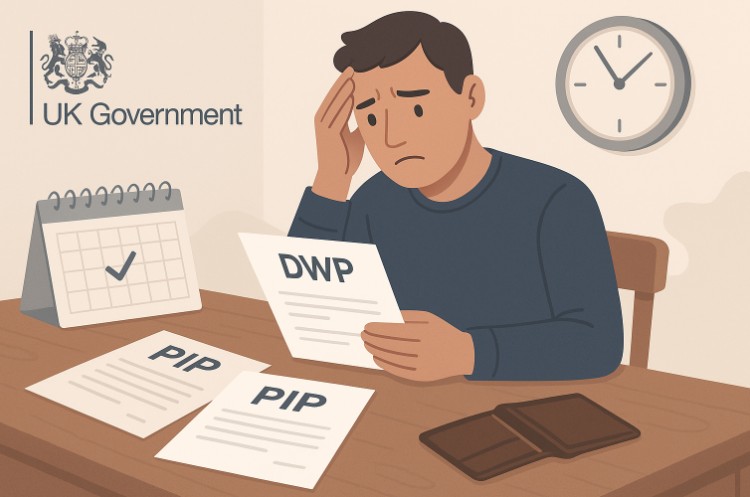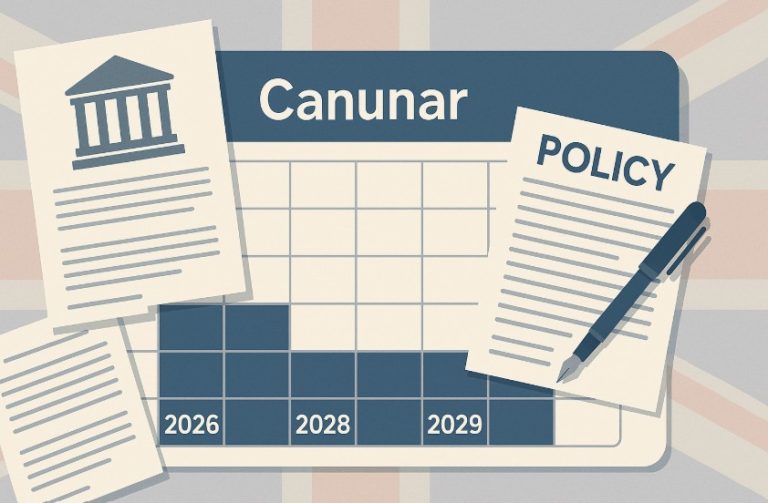Universal Credit is a vital lifeline for many people in the UK, especially for those who dedicate their time to caring for others.
The Carer’s Element of Universal Credit is an additional support designed to help those providing substantial care for someone with a disability or long-term illness.
Understanding how to apply for the Carer’s Element of Universal Credit can significantly impact your financial stability and overall quality of life.
What Is the Carer’s Element in Universal Credit?

The Carer’s Element is an additional monthly payment provided to individuals receiving Universal Credit who also provide substantial care for a person with a disability or health condition.
It helps support unpaid carers who might otherwise struggle financially due to their caregiving responsibilities.
This element is often confused with Carer’s Allowance, but the two are separate. The Carer’s Element is included within the Universal Credit system and does not require a separate application if you are already receiving Universal Credit.
Carer’s Allowance, on the other hand, is a standalone benefit with its own eligibility and application process.
The Carer’s Element is not affected by the carer’s income in the way Carer’s Allowance is. However, Universal Credit itself is a means-tested benefit, so your total payment may still vary depending on your earnings and circumstances.
Who Is Eligible for the Universal Credit Carer Element?
To qualify for the Carer’s Element, the applicant must already be entitled to Universal Credit or be making a new claim.
The primary requirement is providing care for at least 35 hours per week to someone who receives one of several qualifying benefits.
These qualifying benefits include:
- The daily living component of Personal Independence Payment (PIP)
- The middle or highest rate care component of Disability Living Allowance (DLA)
- Attendance Allowance
- Armed Forces Independence Payment
Applicants must not be receiving payment to provide care, such as through a paid employment contract. Additionally, the person receiving care does not have to live in the same household as the carer. Carers must also not be in full-time education and must be over the age of 16.
The care provided should be regular and substantial. This includes tasks such as helping with washing, dressing, preparing meals, or managing medication. The requirement of 35 hours per week must be consistently met to remain eligible.
How Do You Apply for the Carer’s Element of Universal Credit?

Application for the Carer’s Element depends on whether the applicant is already receiving Universal Credit or is making a new claim.
If making a new claim for Universal Credit, the applicant should:
- Visit the official Universal Credit application page online.
- Indicate on the form that they are a carer.
- Provide details of the caring responsibilities, including the name of the person being cared for and the number of hours of care provided each week.
- Confirm that the person being cared for receives a qualifying disability benefit.
For those already claiming Universal Credit:
- Log in to the Universal Credit online portal.
- Use the journal feature to report a change of circumstances.
- Declare the new caring role and submit the necessary details.
Information provided should be accurate and up to date. Incorrect declarations or failure to notify changes in circumstances could result in overpayments or benefit sanctions.
What Evidence Is Needed for a Carer’s Element Application?
While the Department for Work and Pensions (DWP) does not always request documentation, it is advisable to be prepared to present evidence of your caring role if asked. This may include:
- Letters confirming the disability benefit of the person you care for
- A written description of your caring tasks
- Timesheets or care schedules in cases of multiple responsibilities
Applicants may also be invited to attend an interview with a work coach at a local Jobcentre Plus. This session helps to verify the care being provided and ensures that the responsibilities are properly recorded. During this appointment, carers can also discuss any impact on their work search requirements and request adjustments if needed.
The interview is generally informal but is important in supporting your claim. It also offers an opportunity to receive advice and discuss any additional support you may require.
How Much Is the Carer’s Element in 2025?
As of the 2025–26 tax year, the Carer’s Element in Universal Credit is set at £201.68 per month. This figure is added to the standard Universal Credit amount and is not affected by the carer’s earnings, although total Universal Credit entitlement is still means-tested.
Below is a table comparing carer-related payments for 2025:
| Payment Type | Amount (2025) | Notes |
| Carer’s Element (Universal Credit) | £201.68/month | Added to monthly UC; no strict earnings limit |
| Carer’s Allowance | £83.30/week | Cannot earn more than £196/week; standalone benefit |
| Carer Premium/Addition | £46.40/week | Additional support on other benefits like ESA or Income Support |
The Carer’s Element is paid monthly in line with the Universal Credit schedule, while Carer’s Allowance and Carer Premium follow their respective benefit payment schedules.
Can You Receive Both Carer’s Element and Carer’s Allowance?

Yes, it is possible to receive both the Carer’s Element and Carer’s Allowance, but there are important considerations. If you qualify for both, the Carer’s Allowance is deducted pound for pound from your Universal Credit entitlement. However, receiving Carer’s Allowance still entitles you to the Carer’s Element, which means your overall financial support is still improved.
This interaction is referred to as overlapping benefits. While the payment from Carer’s Allowance reduces the amount of Universal Credit paid, the entitlement to Carer’s Element can remain in place. As a result, claimants are not financially disadvantaged in the long term and may benefit from increased total monthly support.
Applicants should ensure that they declare all income sources and benefit claims accurately to avoid potential overpayments.
What Are the Payment Rules for Carers in a Joint Claim?
In cases where Universal Credit is claimed as a couple, both individuals may be eligible for the Carer’s Element if they are each caring for a different person. However, it is not possible to claim two Carer’s Elements for caring for the same person.
For example:
| Situation | Eligibility for Carer’s Element |
| Both partners care for the same person | Only one Carer’s Element allowed |
| Each partner cares for a different qualifying individual | Two Carer’s Elements can be awarded |
This rule ensures that support is proportionate to the actual care being provided and avoids duplication in benefit entitlements. Couples should clearly outline their caregiving roles and the recipients of care when completing or updating their Universal Credit claim.
What Are the Other Elements of Universal Credit?

Universal Credit is made up of several elements that contribute to a claimant’s total entitlement.
These elements are means-tested, meaning the Department for Work and Pensions (DWP) calculates your maximum entitlement by adding up all elements you qualify for, and then deducts your earnings and other income to arrive at the final payment amount. None of these elements are exempt from deductions.
Child Element
The Child Element is included if you are responsible for a child or a qualifying young person who usually lives with you. You will typically receive:
- £292.81 per month per child
- £339.00 per month for the first or only child if born before 6 April 2017
The Two-Child Limit applies, meaning you will not be paid a child element for a third or subsequent child born on or after 6 April 2017, unless an exception applies. However, you should still report all children in your care when applying.
In addition to the main Child Element, disabled children may qualify for an additional amount, which is not limited by the Two-Child rule:
| Disabled Child Additions | Amount (Per Month) |
| Disabled child addition | £158.76 |
| Severely disabled child addition | £495.87 |
These additions apply if the child receives qualifying disability benefits such as DLA, PIP, Child Disability Payment (Scotland), or Adult Disability Payment (Scotland).
Childcare Costs Element
The Childcare Costs Element helps cover the cost of registered childcare while you work. To be eligible:
- You must be in paid work.
- In joint claims, both partners must be working unless one is exempt due to illness, caring responsibilities, or specific statutory leave.
You can claim:
- Up to 85% of your childcare costs
- A maximum of £1,031.88 per month for one child
- A maximum of £1,768.94 per month for two or more children
Childcare must be through a registered provider such as a nursery, childminder, or after-school club.
Limited Capability for Work Elements

If you have a health condition or disability that affects your ability to work, you may qualify for one of the following:
- Limited Capability for Work (LCW): £158.76/month
- Limited Capability for Work and Work-Related Activity (LCWRA): £423.27/month
Eligibility is determined through the Work Capability Assessment (WCA). Note the following:
1. The LCW element is no longer available to new UC claimants from 3 April 2017 onwards unless transitioning from ESA with a work-related activity component.
2. In joint claims, only one LCW or LCWRA element will be included:
- If both claimants have LCWRA, one LCWRA is included.
- If both have LCW, one LCW is included.
3. In some cases, there may be a three-month wait before this element is added unless you qualify for an exemption, such as terminal illness or recent ESA entitlement.
If you haven’t had a WCA and your earnings exceed £846.56 per month, you may not be eligible unless you also receive a qualifying disability benefit.
Transitional Element
A transitional element is included in Universal Credit for people who previously received the Severe Disability Premium (SDP) under legacy benefits. This transitional protection ensures they do not lose out financially during the migration to Universal Credit.
| Household Type | Monthly Transitional Payment |
| Single with LCWRA element | £143.37 |
| Single without LCWRA element | £340.50 |
| Couple (both entitled to SDP) | £483.88 |
| Couple (one entitled to SDP with LCWRA element) | £143.37 |
| Couple (one entitled to SDP without LCWRA element) | £340.50 |
People who transition to Universal Credit through the managed migration process may also receive transitional protection if they were on legacy benefits and have been issued a Migration Notice.
This transitional amount is not permanent and will be gradually reduced over time as other elements of the claim increase.
Housing Costs Element
The Housing Costs Element helps cover rent payments or housing charges. The exact amount you can receive depends on:
- The Local Housing Allowance (LHA) for your area
- Your age and circumstances (e.g., shared accommodation rate may apply under 35)
- Type of tenancy (private, social housing, or mortgage interest)
Details for this element are covered in the Universal Credit housing guide.
Conclusion
Applying for the Carer’s Element of Universal Credit ensures vital financial support for those who dedicate their time to caring for others. Understanding eligibility, application steps, and the interaction with other benefits helps carers receive what they’re entitled to.
By staying informed and reporting changes accurately, carers can access consistent monthly support tailored to their needs. It’s important to use official guidance and seek help when needed to make the process smoother and ensure full entitlement under Universal Credit.
FAQs About Applying for Carer’s Element of Universal Credit
What happens if the person I care for loses their qualifying benefit?
If the person you care for no longer receives a qualifying disability benefit, you may lose entitlement to the Carer’s Element. Always report changes in their benefit status through your UC journal.
Can I work and still get the Carer’s Element?
Yes, unlike Carer’s Allowance, the Carer’s Element does not have a strict earnings limit. However, Universal Credit is means-tested, so your income can affect your total payment.
Do students qualify for the Carer’s Element?
Most full-time students are not eligible for Universal Credit, but part-time students who meet other criteria (including caring hours) may qualify.
Is the Carer’s Element backdated?
It may be backdated to the start of your caring role or Universal Credit claim, but only if you report your status promptly. Always declare your caring role as early as possible.
Will the Carer’s Element affect my work commitments?
Yes, your work coach may adjust your work search requirements if you qualify for the Carer’s Element, recognising your reduced availability for employment.
Can I receive the Carer’s Element for caring for a child?
Yes, if the child receives a qualifying benefit like DLA (middle or highest care component), and you meet the 35-hour caring requirement.
How often is the Carer’s Element paid?
It is included in your monthly Universal Credit payment and reflects any changes reported to the DWP during your assessment period.






